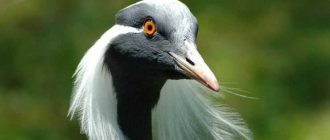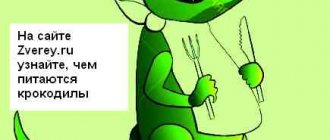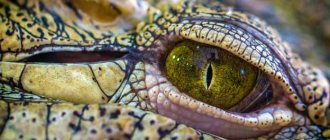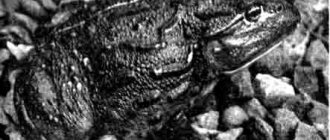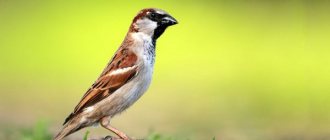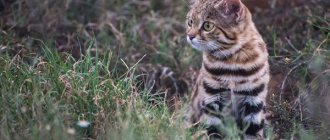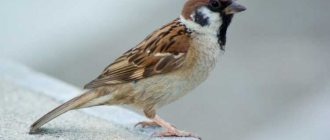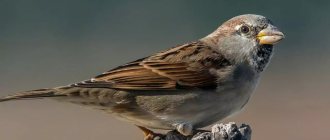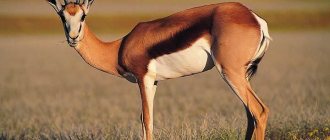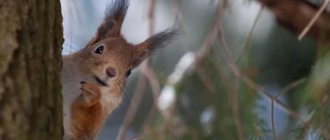The ferret is a cute, active animal from the mustelidae family. These representatives of the fauna are also called furo or domestic ferret. They began to be domesticated 2,500 years ago, and descriptions of these animals are found in the records of Aristotle and Aristophanes dating back to the 4th century BC. The domesticated ferret became widespread in the Middle Ages; this ferret was used to hunt rabbits, and also to destroy mice, rats, and moles on ships and farms. Initially, mammals lived in southern Canada, the western United States to the northern borders of Mexico. The habitats of the animals in the wild were forest and semi-forest areas near water bodies. These predators were also found in European countries (France, Italy, Great Britain) and were depicted in paintings.
The decorative forest ferret is the progenitor of the domestic ferret. The thick and soft fur comes in white, golden, brown and mixed colors. A small furo has a body length of 35 to 51 cm, of which the tail is from 8 to 15 cm. The weight of a small animal is from 0.3 to 3 kg. Females are significantly smaller than males. The strong, short paws have sharp, long claws. The flexible neck is decorated with a cone-shaped head, the top of which is the nose. The shiny, lively eyes are round or almond-shaped, the color depends on the shade of the coat. The mouth has 34 white or ivory teeth. Small ears, rounded and not pressed to the head. The back of the animal is elongated with a smooth curve in the form of an arc.
Is it worth bringing home an animal?
For those who are not familiar with the pet ferret, it is important to educate yourself about its characteristics beforehand. This is necessary so that you don’t have to cancel the purchase later. Then it will be offensive not only to the owner, but also to the animal.
Of course, a dog or cat requires no less attention in care. But such favorites have become familiar in every family. With ferrets the situation is different. They made friends with people quite recently. Therefore, consider the main disadvantages of animals, namely:
First of all, a ferret’s daily routine comes as a surprise to many. Those who have children are especially disappointed. After all, kids want to play with pets around the clock.
With such a pet this trick will work. This is because a ferret spends most of her life sleeping. She sleeps soundly and for a long time. In this case, waking her up is extremely harmful and undesirable. This will ruin your pet's health.
Secondly, ferrets do not have the ability to wash themselves like cats. In general, they are not particularly clean. On top of that, the animals emit an unpleasant odor. By the way, the “aroma” intensifies if the ferret is sick or scared.
Therefore, it is important to initially warn your family about this feature of your pet. But in such “incidents” nature is to blame, not the animal. After all, in the wild they use unique pheromones to scare away enemies.
Note!
- How to choose a mattress and not make a mistake? Review of the best models, size table
- Cotton blanket: advantages and disadvantages, rules of choice and care
- Review of ideas for exterior home decoration
Thirdly: such an animal requires constant supervision. After all, ferrets do not understand commands and cannot be trained. But they are interested in all small-sized objects in the house. Therefore, any little thing should be hidden from the sensitive eye of the animal.
In general, despite the obvious nuances, ferrets are very peaceful. They adore children if they treat them well. If mistreated, you can expect aggression and refusal to eat.
By the way, you can find out how much a ferret costs in nurseries or pet stores. But they must have a license. All conditions for these gentle animals to live are provided there.
Appearance
The ferret has an external resemblance to the European ferret, because it is its domesticated form. The animal's fur is yellowish, its eyes are red. Fretka's body length is 50 cm including a small tail. The weight of the animal is a kilogram.
Ferrets – pets stop growing by the age of one year. The female can weigh from 300 g to a kilogram. The body length of a female individual is from 33 to 35 cm. The weight of a male can range from 900 g to 2.5 kg, the body length is approximately 40 cm. Castrated male individuals weigh less. The tail of animals is small - only 7-10 cm in length. Frets raised in captivity have fangs. There are only 5 claws on the paw of a marten representative.
There is also a black-footed subspecies of Fretka. The fur of the individual is the same color as that of the ferret. A distinctive feature of the animal is the black circles located on and around the eyes. The animals also have dark markings on their tails. An individual usually weighs less than a kilogram, sexual dimorphism is expressed in size: males are larger. The body length of an individual can vary from 38 to 50 cm. Scientists have bred domestic Ferrets in order to create a variety of fur colors.
Ferret selection
If the decision to purchase has already been made, then consider a few recommendations for choosing a ferret:
First, carefully study the animal's father and mother. They must be large. After all, a female with good physical shape will give birth to strong babies.
Also, pay attention to the behavior of the selected animal. He should not be aggressive and angry.
Note!
- How to protect a gazebo from rain and wind in summer and snow in winter - a review of the best options
Chicken - description, types, classification, nutrition and maintenance of domestic chicken (115 photos and videos)
- Sheep - lifestyle, description of breeds, habitat, feeding and care of sheep when growing (145 photos and videos)
It is mandatory to present all certificates and documents in the store. Sometimes, you can ask for the animal's pedigree. Only after studying the paper questions can you make a purchase.
Where does it live?
Previously, Frets lived in forests, near bodies of water. Today they quietly inhabit people's homes. Black-footed Frets usually create burrows for themselves and feed on dogs. This subspecies was found in Canada and America. Due to the fact that agriculture did not develop in the Great Plains, the animals were on the verge of extinction.
In 1987, the last individuals were caught in Wyoming. Experts began breeding them in captivity. Since about 1991, descendants of females from this small group have already inhabited Montana and South Dakota, New Mexico and Colorado. But already in 2008, the black-footed ferret was listed in the IUCN Red List due to the threat of extinction.
How to properly care for your pet
Every ferret owner wants only a happy fate for him. But how long a ferret lives depends on proper care and quality nutrition. To do this, adhere to the basic requirements for its content.
First, you should keep the animal constantly clean. But this does not mean that he needs to be bathed every day. Simply, actively care for your ferret's sleeping area
Clean up his toilet or leftover food in a timely manner. Then, you can avoid unpleasant problems associated with infections and diseases of the animal. Moreover, the stores offer a huge selection of different bedding for rodents. They are very soft and warm.
If a rodent does not like water, you should not constantly wet it. Such actions will only bring harm, not benefit. About twice a month will be enough to bathe her.
Veterinarians also call nail care an important aspect of keeping ferrets. The need for cutting them increases if there is a child in the house. It is known that it is better to prevent dangerous scratches than to treat them later.
Interestingly, in autumn and spring the animals actively moult. In this case, buy a comb at a pet store. He is able to comb out all the excess fur of the ferret. This procedure must be carried out at least twice a day. Then there will be a good result.
As you can see, domestic ferrets do not cause much trouble for owners. Even kids can maintain a ferret. They are very friendly and nice. Such a playful character can lift your spirits on the gloomiest day.
It is for these qualities that the animals are loved by both children and adults. The main thing is to properly care for your pets. Then, they will give you a lot of positive and bright moments in life.
What does the little predator eat?
The black ferret prefers to feast on mice. The main diet consists of voles and mice, water rats, frogs and toads, large insects and wild birds. If they find hare holes, they will definitely sneak in and strangle the little bunnies. If the ferret's home is located next to a person, then it calmly attacks poultry and rabbits. Many people are interested in what a ferret looks like and what this predator eats.
Their behavior is quite aggressive. They are ready to offer resistance to large animals at any moment. Thanks to its agility, the predator can catch prey on the run, but it can also wait for its prey near the hole for a long time. With the onset of darkness, the ferret goes hunting.
Haystacks, rotten stumps, heaps of dead wood can serve as shelter for it, and sometimes it can occupy a fox or badger hole.
Photo of the ferret
Conditions for keeping
Let's take a closer look at how to keep a ferret at home so that he feels as comfortable as possible.
You need to take into account that for about 14 hours a day the animal is in a period of rest and sleep, and the rest of the time it is active. The ferret cannot stay in the cage for a long period, as she needs to constantly move.
Therefore, it is worth preparing a separate room for the animal to walk. To do this, all small objects should be hidden; all glass breakable objects should also be taken to another room. It is necessary to hide all cords from electrical appliances, in order to avoid chewing the wires and sad consequences, and also take out flowers in pots, since some individuals have a pronounced tendency to dig tunnels in the soil.
The animal will need a cage for sleep and general pastime. The size of the cage should be 2 times the size of the portable container for the animal. Choose a cage with the thickest and strongest metal bars so that the ferret does not bend them and escape from the home.
It is recommended to lay a soft flannel diaper as bedding; sawdust is also suitable, but it is worth considering that the contents of the cage should be changed every two days to avoid the appearance of an unpleasant odor, which is a feature of ferrets.
It is imperative to place a container with sand in the cage so that the animal goes to the toilet normally; it quickly gets used to the new tray and will obediently visit a specially designated place.
Important! When choosing or constructing a litter tray, you must ensure that the part that is adjacent to the cage is sufficiently raised, because when going to the toilet, the animal raises its tail and feces often contaminate the bars of the cage or the wall to which it is moved.
Is it possible to propagate at home?
Breeding ferrets at home is quite simple; to do this, you just need to take into account all the nuances of breeding:
- the female must be 11 months old and the male 8 months old;
- in order to perform mating, it is necessary to place the female with the male, repeat the process 3 times;
- individuals must have all the necessary vaccinations;
- Before the offspring are born, the female must be moved to an empty cage.
At one time, the female can breed up to 10 individuals, which remain with the mother in the cage until the age of 4 months.
Important! It is worth remembering that healthy offspring will be born only if the parents were healthy and did not have any problems, were regularly vaccinated, and the age of the animals at the time of mating was observed.
